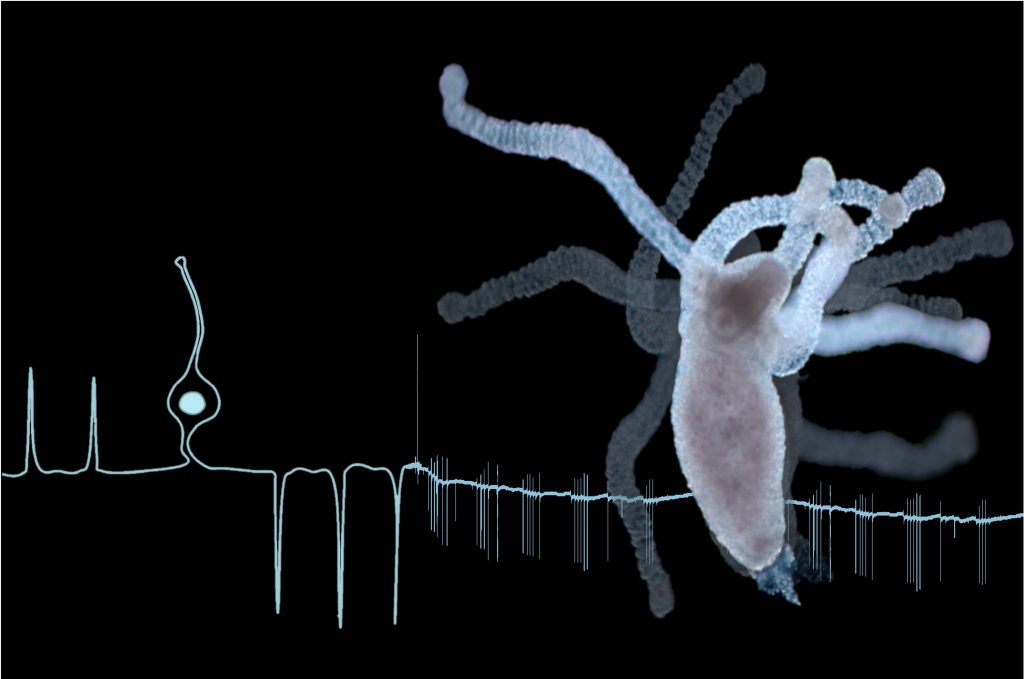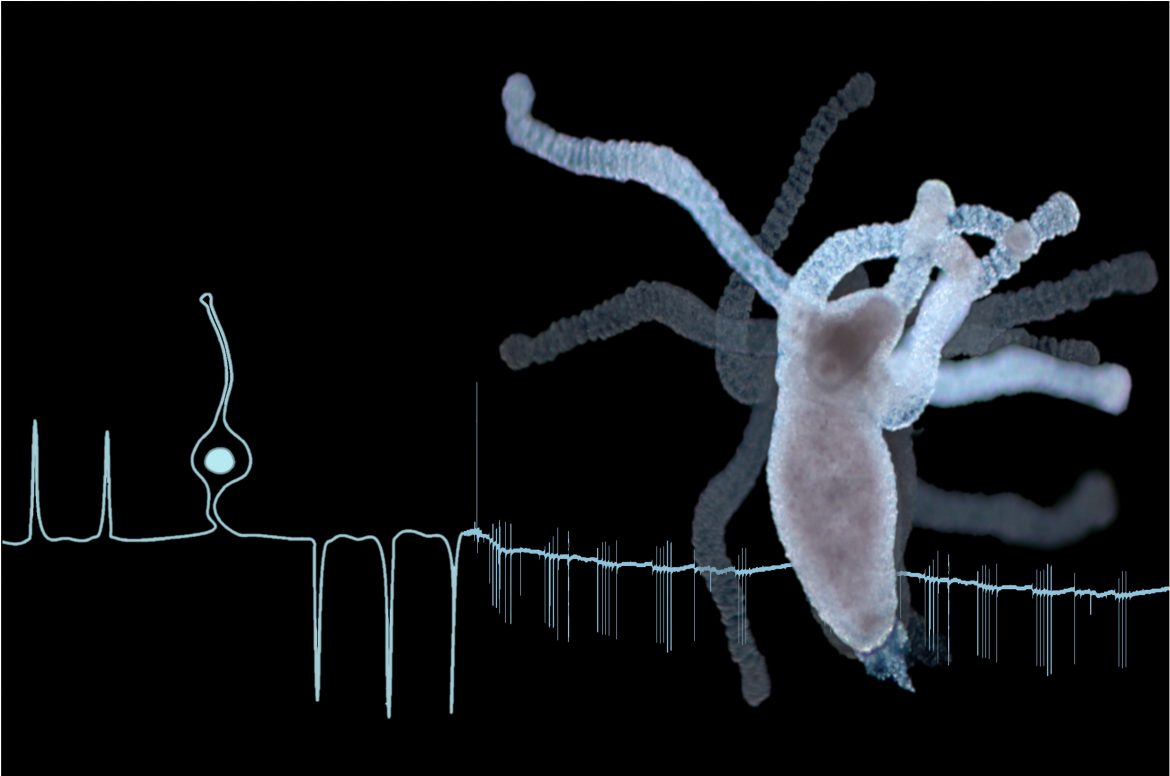The behaviour of a small invertebrate can be controlled by soaking it in a semiconducting organic molecule solution. The research group lead by Claudia Tortiglione takes a step forward in the development of neuroelectronic devices, discovering new interactions between living matter and new synthetic compounds and opening innovative perspectives in the field of neuromodulation. The team, including Angela Tino and Silvia Santillo, published a study in the journal Science Advances which demonstrates how a semiconductor organic molecule, synthesized by the Laboratory of Organic Electronics, University of Linköping, activates specific neuronal networks in the polyp Hydra vulgaris. More in detail, ETE-S, a thiophene conjugated oligomer and semi-conducting compound, induces a precise behavioral response by modifying the usual rhythmic contractions of the cylindrical Hydra body and elicits tentacle writhing, a behaviour that this invertebrate typically exhibits when eating. Through pharmacological and electrophysiology approaches, it has been demonstrated that this behaviour results from the modulation of the electrical activity of neurons located in the animal’s head. Tortiglione’s team, had previously demonstrated that specific cells located on the polyp’s peduncle produce an enzyme that induces ETE-S to form electronically conducting material that become embedded in the living tissue of the animal, making it a bionic organism. These self-organized electronic components could be used for neurostimulation or as entry points to connect the nervous system to electronic devices, offering an alternative to current invasive methods. The next step will be to study the relationships between similar molecular structures and different induced behaviours, to design organic electrodes that can enhance or inhibit the activity of specific neural networks.
https://www.science.org/doi/10.1126/sciadv.adi5488
https://www.nature.com/articles/d43978-023-00165-x
https://www.tortiglione.com/nanobiomoleculargroup/Sito/Home.html


